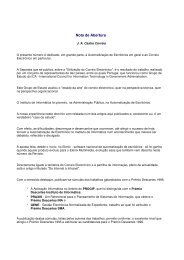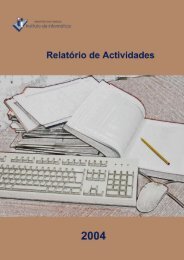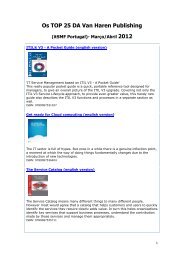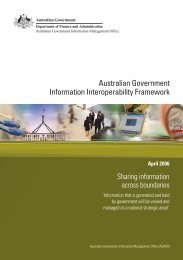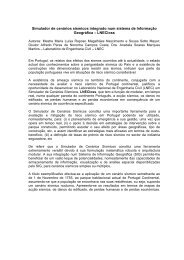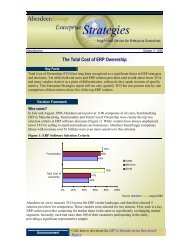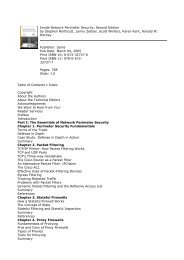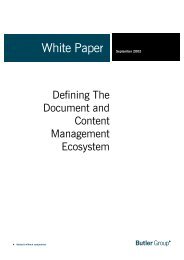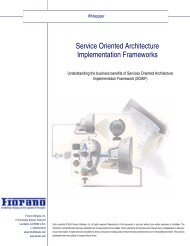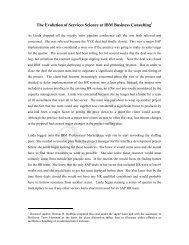OECD Peer Review of E-Government in Denmark - ePractice.eu
OECD Peer Review of E-Government in Denmark - ePractice.eu
OECD Peer Review of E-Government in Denmark - ePractice.eu
Create successful ePaper yourself
Turn your PDF publications into a flip-book with our unique Google optimized e-Paper software.
ANNEX B: INSTITUTIONAL CONTEXT AND PUBLIC GOVERNANCE ARRANGEMENTS<br />
Constitutional environment<br />
United <strong>in</strong>to a s<strong>in</strong>gle k<strong>in</strong>gdom at the end <strong>of</strong> the 10th century, and an <strong>in</strong>dependent nation ever s<strong>in</strong>ce,<br />
<strong>Denmark</strong> is a constitutional monarchy with a unicameral system <strong>of</strong> parliamentary government. The<br />
monarch (currently Queen Margrethe II) is the Head <strong>of</strong> State and heads the <strong>Government</strong>, but has no<br />
political power and performs only formal and ceremonial functions. Executive power is vested <strong>in</strong> the<br />
government, which consists <strong>of</strong> m<strong>in</strong>isters under the leadership <strong>of</strong> the Prime M<strong>in</strong>ister. The monarch has<br />
the prerogative (based on recommendations from the Prime M<strong>in</strong>ister) to appo<strong>in</strong>t and dismiss m<strong>in</strong>isters<br />
and to decide the delegation and distribution <strong>of</strong> duties among m<strong>in</strong>isters.<br />
M<strong>in</strong>isters are responsible for all actions <strong>of</strong> the m<strong>in</strong>istries over which they have control. There is<br />
no constitutional convention <strong>of</strong> collective m<strong>in</strong>isterial responsibility. The prerogatives <strong>of</strong> the<br />
<strong>Government</strong> are guaranteed by the Danish Constitution and cannot be <strong>in</strong>terfered with by the<br />
Parliament. However, specific acts <strong>of</strong> government, (especially those concern<strong>in</strong>g foreign policy) require<br />
the consent <strong>of</strong> the Parliament.<br />
Legislative power rests with the <strong>Government</strong> and the Parliament (the Folket<strong>in</strong>g) conjo<strong>in</strong>tly. The<br />
Parliament consists <strong>of</strong> 179 members, two <strong>of</strong> whom are elected <strong>in</strong> Greenland and two <strong>in</strong> the Faroe<br />
Islands. The members <strong>of</strong> the Folket<strong>in</strong>g are elected for four-year terms.<br />
The Constitution provides for separation <strong>of</strong> judicial and executive powers. The monarch appo<strong>in</strong>ts<br />
judges; <strong>in</strong> contrast to other state-appo<strong>in</strong>ted employees, judges cannot be dismissed on the basis <strong>of</strong> an<br />
adm<strong>in</strong>istrative decision, but may only be dismissed by way <strong>of</strong> court judgement.<br />
<strong>Denmark</strong> is a member <strong>of</strong> the European Union. In 1992, Danes voted aga<strong>in</strong>st the Maastricht<br />
Treaty, which proposed monetary union and a common European defence force, and the country was<br />
granted opt-outs from these provisions (among others). In a referendum held <strong>in</strong> September 2000,<br />
Danes voted aga<strong>in</strong>st the adoption <strong>of</strong> the Euro.<br />
Political environment<br />
The Danish political system is a multi-party structure with several parties represented <strong>in</strong> the<br />
Parliament. Danish governments are most <strong>of</strong>ten m<strong>in</strong>ority adm<strong>in</strong>istrations, govern<strong>in</strong>g <strong>in</strong> coalition with<br />
one or more support<strong>in</strong>g parties. Danish politics is therefore characterised by <strong>in</strong>ter-party compromise.<br />
S<strong>in</strong>ce 1909, no s<strong>in</strong>gle party has held the majority <strong>of</strong> seats <strong>in</strong> Parliament. The Social Democrat and<br />
Liberal parties have each led a number <strong>of</strong> coalition governments dur<strong>in</strong>g the 20 th century. S<strong>in</strong>ce<br />
November 2001, a Liberal-led coalition has been <strong>in</strong> power.<br />
The system is characterised by a culture <strong>of</strong> compromise and consensus between the political<br />
players, and there are good opportunities for broad popular participation <strong>in</strong> political processes at the<br />
national and local levels through membership <strong>in</strong> the political parties, <strong>in</strong>terest groups, user committees<br />
and various organisations and associations. Danish counties and municipalities have a high degree <strong>of</strong><br />
political autonomy – for example, they have their own elections and regional adm<strong>in</strong>istrations.<br />
162



